Today we explore economic Behemoths as we take a look at the 15 biggest US cities ranked by GDP. This category, however, is quite fluid and cities tend to change places as years pass by. Unlike the GDP, the population doesn’t usually change that fast as seen on our list of 10 largest US cities by decade. Still, population and GDP can at times be intertwined, especially when things start heading down south. Detroit is the best example as The Motor City has lost a large portion of its citizens with the downfall of the car industry and its GDP with it. With all this in mind, end-results probably won’t surprise you as the biggest cities have more means at their disposal in creating the best results. But, let us go one step at a time.
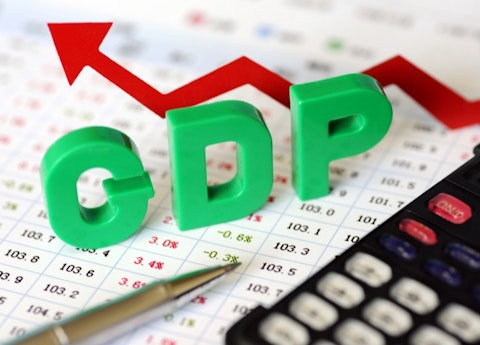
zhaoliang70/Shutterstock.com
Our source is easily available to everyone interested in the topic. U.S. Bureau of Economic Analysis has all the data you need in order to see which of the US cities generates most gross income over selected period of time. However, data is abundant and needs to be pinpointed – plus, you still have to do the research. For your convenience, we have done both. However, our methodology still warrants an explanation. For starters, we have used the real GDP in chained dollars. What does that mean? Two things. First and foremost, real GDP doesn’t necessarily have to mean that given city’s inhabitants are the richest. GDP per capita does that much better, and real GDP only offers the insight into biggest moneymaking cities. Secondly, chained dollar takes all the inflation and devaluation rates into account and represents the adjusted dollar’s value. In other words, one dollar would have usually bought you more a few years ago. $1 from 1990 is worth $1.86 today, for instance. In order to fully grasp the changes in respective city’s economy, we have had to adjust the values and take 2009 as the base year, as usual. Apart from using the total GDP and chained dollars, we have also generated an average GDP total for the years between 2001 and 2014 (all available years). Of course, we have also included both end-year’s totals just to show you how much the US economy has evolved over these 14 years. Finally, we have used the data for all industries and listed metropolitan areas which sometimes consist of two or more cities across more than one state. So, without further ado, let’s get underway with our list of 15 biggest US cities ranked by GDP.
15. Phoenix (Arizona)
Average GDP value in millions of chained dollars for the period between 2001 and 2014: $183,010
Metropolitan Statistical Area: Phoenix-Mesa-Scottsdale (Arizona)
2001 current dollar / chained dollar: $129,939 / $152,786
2014 current dollar / chained dollar: $215,214 / $197,980
With an average GDP of 183 billion dollars Phoenix, together with Mesa and Scottsdale takes the entry spot on our list. Along the way, you’ll see that most cities have exhibited a slight or slightly larger GDP decrease during the years 2008 and 2009 for well-known reasons. However, most of US cities are now healthy in terms of economy and so is Phoenix which has surpassed the 2007 GDP (last year before the down growth) in 2012 and exhibits a steady rise since.
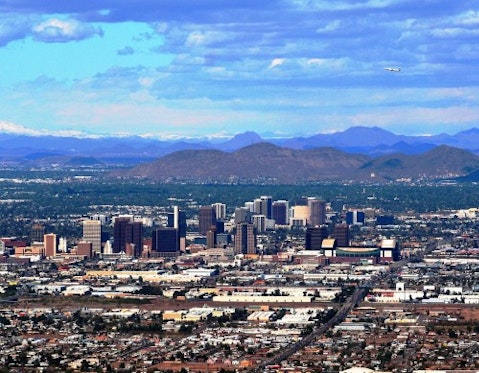
14. Minneapolis (Minnesota)
Average GDP value in millions of chained dollars for the period between 2001 and 2014: $197,821
Metropolitan Statistical Area: Minneapolis-St. Paul-Bloomington (Minnesota-Wisconsin)
2001 current dollar / chained dollar: $148,189 / $177,678
2014 current dollar / chained dollar: $235,733 / $216,891
Twin Cities of Minneapolis and St. Paul, together with Bloomington make it to 14th spot. Only drop in GDP figures has occurred during the dreadful year of 2009, but statistically speaking, the drop wasn’t that big (less than 4 million dollars in total). It didn’t take long for the city to recuperate as well, with 2010 totals surpassing those of 2008 by 4.5 million dollars.

13. Detroit (Michigan)
Average GDP value in millions of chained dollars for the period between 2001 and 2014: $213,254
Metropolitan Statistical Area: Detroit-Warren-Dearborn (Michigan)
2001 current dollar / chained dollar: $190,916 / $220,347
2014 current dollar / chained dollar: $236,500 / $219,862
It’s no secret that Detroit has suffered the consequences of economic recession in its full weight – much fuller than any other US city. Still, after the bailout, things seem to be returning to normal. 2008 and especially 2009 have hit Detroit hard, but ever since 2012, city’s GDP is seeing a steady increase.

12. Seattle (Washington)
Average GDP value in millions of chained dollars for the period between 2001 and 2014: $234,061
Metropolitan Statistical Area: Seattle-Tacoma-Bellevue (Washington)
2001 current dollar / chained dollar: $166,308 / $198,807
2014 current dollar / chained dollar: $300,827 / $278,570
The Emerald City has only lost around 1.5 million dollars in 2009 compared to the GDP value of 2008. In years ahead, Seattle has seen an increase in its GDP of around 25 percents which is quite an achievement for the northwesternmost city on our list of 15 biggest US cities ranked by GDP.

dibrova/Shutterstock.com
11. Miami (Florida)
Average GDP value in millions of chained dollars for the period between 2001 and 2014: $252,273
Metropolitan Statistical Area: Miami-Fort Lauderdale-West Palm Beach (Florida)
2001 current dollar / chained dollar: $184,952 / $224,062
2014 current dollar / chained dollar: $299,161 / $273,386
Miami, Fort Lauderdale and West Palm Beach make the most of Florida’s largest metro area. They have seen a loss of some 20 million during 2008 and especially 2009, but things have returned back to normal in 2012 when the cities have finally recorded a result better than that of pre-recession time.

10. Atlanta (Georgia)
Average GDP value in millions of chained dollars for the period between 2001 and 2014: $276,224
Metropolitan Statistical Area: Atlanta-Sandy Springs-Roswell (Georgia)
2001 current dollar / chained dollar: $213,325 / $252,285
2014 current dollar / chained dollar: $324,881 / $298,146
Unlike previous metropolitan area, Atlanta, Sandy Springs and Roswell haven’t recorded a loss during 2008, but their luck didn’t hold during 2009. However, since 2011, everything is going well again for Hotlanta and co as they have managed to surpass the record of 2008. Needless to say, everything is going according to plan today as well.

9. Boston (Massachusetts)
Average GDP value in millions of chained dollars for the period between 2001 and 2014: $312,124
Metropolitan Statistical Area: Boston-Cambridge-Newton (Massachusetts-New Hampshire)
2001 current dollar / chained dollar: $241,957 / $285,254
2014 current dollar / chained dollar: $382,459 / 353,710
Boston is one of select few cities which have managed to record very low losses during 2009 (around 2 million) and gain during 2008. Boston and its suburbs have since managed to gain more than 20 percents in GDP revenue while exhibiting steady growth year in-year out.

8. San Francisco (California)
Average GDP value in millions of chained dollars for the period between 2001 and 2014: $322,271
Metropolitan Statistical Area: San Francisco-Oakland-Hayward (California)
2001 current dollar / chained dollar: $245,090 / $290,578
2014 current dollar / chained dollar: $411,969 / $370,478
Bay Area is currently worth more than 410 billion dollars a year if GDP is to be considered as an indicator. After steady gains every year, the area has lost close to 20 million dollars in 2009, compared to previous year. After few years, the city returned to the path of prosperity.
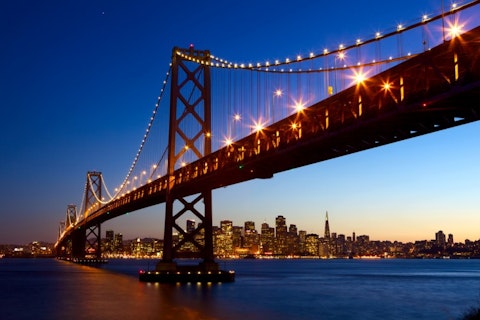
dibrova/Shutterstock.com
7. Philadelphia (Pennsylvania)
Average GDP value in millions of chained dollars for the period between 2001 and 2014: $334,450
Metropolitan Statistical Area: Philadelphia-Camden-Wilmington (Pennsylvania-New Jersey-Delaware-Maryland)
2001 current dollar / chained dollar: $249,671 / $302,979
2014 current dollar / chained dollar: $391,118 / $358,469
Philadelphia is still exhibiting rising GDP, but it’s now slower than San Francisco which had taken the previous spot on our list of 15 biggest US cities ranked by GDP. However, over these 14 years, City of Brotherly Love has been slightly better and it’s one of precious few US cities which had exhibited a steady growth even through 2008 and 2009.

6. Dallas (Texas)
Average GDP value in millions of chained dollars for the period between 2001 and 2014: $357,654
Metropolitan Statistical Area: Dallas-Fort Worth-Arlington (Texas)
2001 current dollar / chained dollar: $256,467 / $302,007
2014 current dollar / chained dollar: $504,358 / $460,154
Texas is a good example of how the population growth can stimulate total GDP growth. Dallas, Fort Worth and Arlington have seen a hefty increase in both during the last 14 years. GDP has increased by staggering 97 percents during this time and the only loss was seen during 2009, as you might have guessed. However, these 20 million were instantly returned next year.
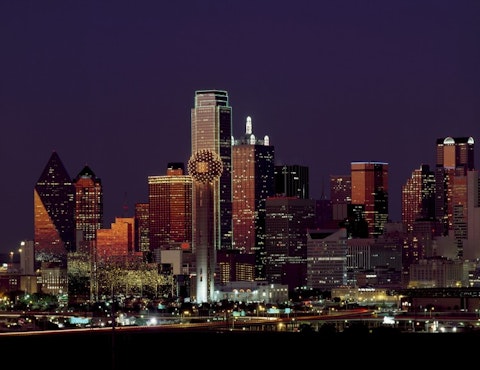
5. Houston (Texas)
Average GDP value in millions of chained dollars for the period between 2001 and 2014: $366,282
Metropolitan Statistical Area: Houston-The Woodlands-Sugar Land (Texas)
2001 current dollar / chained dollar: $240,943 / $313,378
2014 current dollar / chained dollar: $525,397 / $454,944
Similar to Dallas, Houston too has risen to prominence during the last few decades. Almost 119 percents is the figure of Houston metropolitan area’s GDP increase between 2001 and 2014. However, City’s prosperity had taken a dent during the infamous 2009 when it came 41 million short compared to the year before.
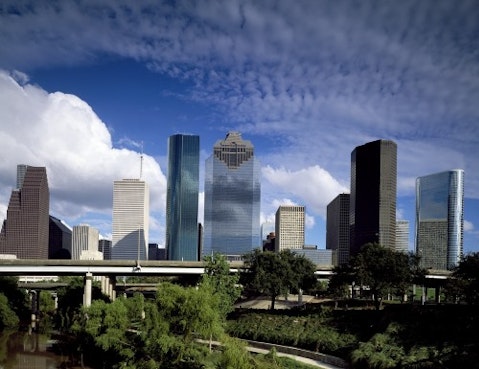
4. Washington (District of Columbia)
Average GDP value in millions of chained dollars for the period between 2001 and 2014: $393,404
Metropolitan Statistical Area: Washington-Arlington-Alexandria (District of Columbia-Virginia-Maryland-West Virginia)
2001 current dollar / chained dollar: $272,133 / $332,746
2014 current dollar / chained dollar: $471,584 / $435,583
It has to be noted that US capital is slowly losing the race to the Texas duo, but still manages to position itself as high as spot number 4 thanks to a better headstart. That’s not everything worth mentioning about Washington, however, as the government never allowed nation capital’s GDP to decline.

3. Chicago (Illinois)
Average GDP value in millions of chained dollars for the period between 2001 and 2014: $515,788
Metropolitan Statistical Area: Chicago-Naperville-Elgin (Illinois-Indiana-Wisconsin)
2001 current dollar / chained dollar: $416,456 / $504,428
2014 current dollar / chained dollar: $610,552 / $557,745
The first city on our list to net a worth of half a trillion dollars and beyond, Chicago gets the bronze. It has, however, showcased losses both in 2008 and 2009, but already during the year 2010, things have gone back to normal. Since then, Chicago’s GDP curve has seen a steady growth of more than 14 percents overall.

Theresa Scarbrough/Shutterstock.com
2. Los Angeles (California)
Average GDP value in millions of chained dollars for the period between 2001 and 2014: $718,828
Metropolitan Statistical Area: Los Angeles-Long Beach-Anaheim (California)
2001 current dollar / chained dollar: $544,144 / $643,821
2014 current dollar / chained dollar: $866,745 / $797,697
The City of Angels has rarely looked back throughout history, but world recession had still managed to take a chunk of its value during the year 2009. City’s GDP fell below the 2007 level that year, and Los Angeles needed couple more years to fully recuperate from this crisis.
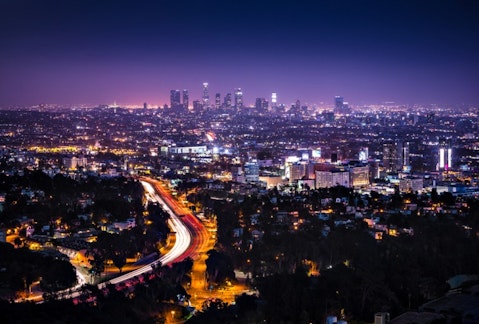
Sarah Fields Photography/Shutterstock.com
1. New York (New York)
Average GDP value in millions of chained dollars for the period between 2001 and 2014: $1,219,123
Metropolitan Statistical Area: New York-Newark-Jersey City (New York-New Jersey-Pennsylvania)
2001 current dollar / chained dollar: $975,625 / $1,171,829
2014 current dollar / chained dollar: $1,558,518 / $1,423,173
Naturally given city’s soaring population figure, number one spot on our list of 15 biggest US cities ranked by GDP goes to New York. The Tri-state metropolitan area is currently worth more than 1.5 trillion dollars which amounts to around 9 percents of country’s total GDP. New York has lost some of its GDP revenue during 2008 but has managed to return considerable increase during 2009. Ever since the loss, city and its surrounding areas have seen an increase of almost 24 percents.

Anton_Ivanov / Shutterstock.com



